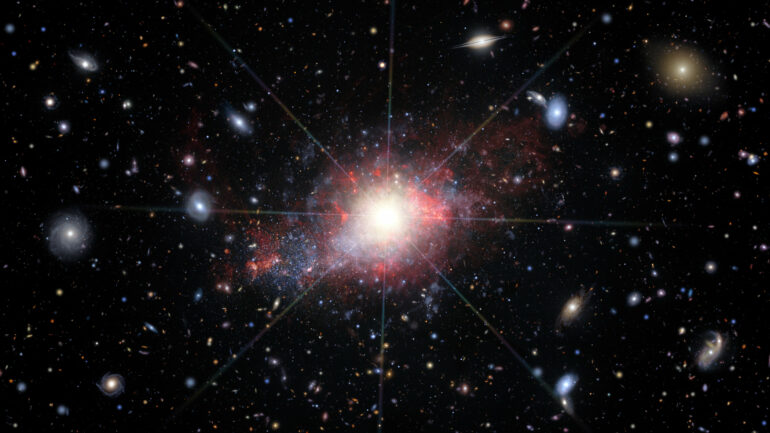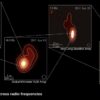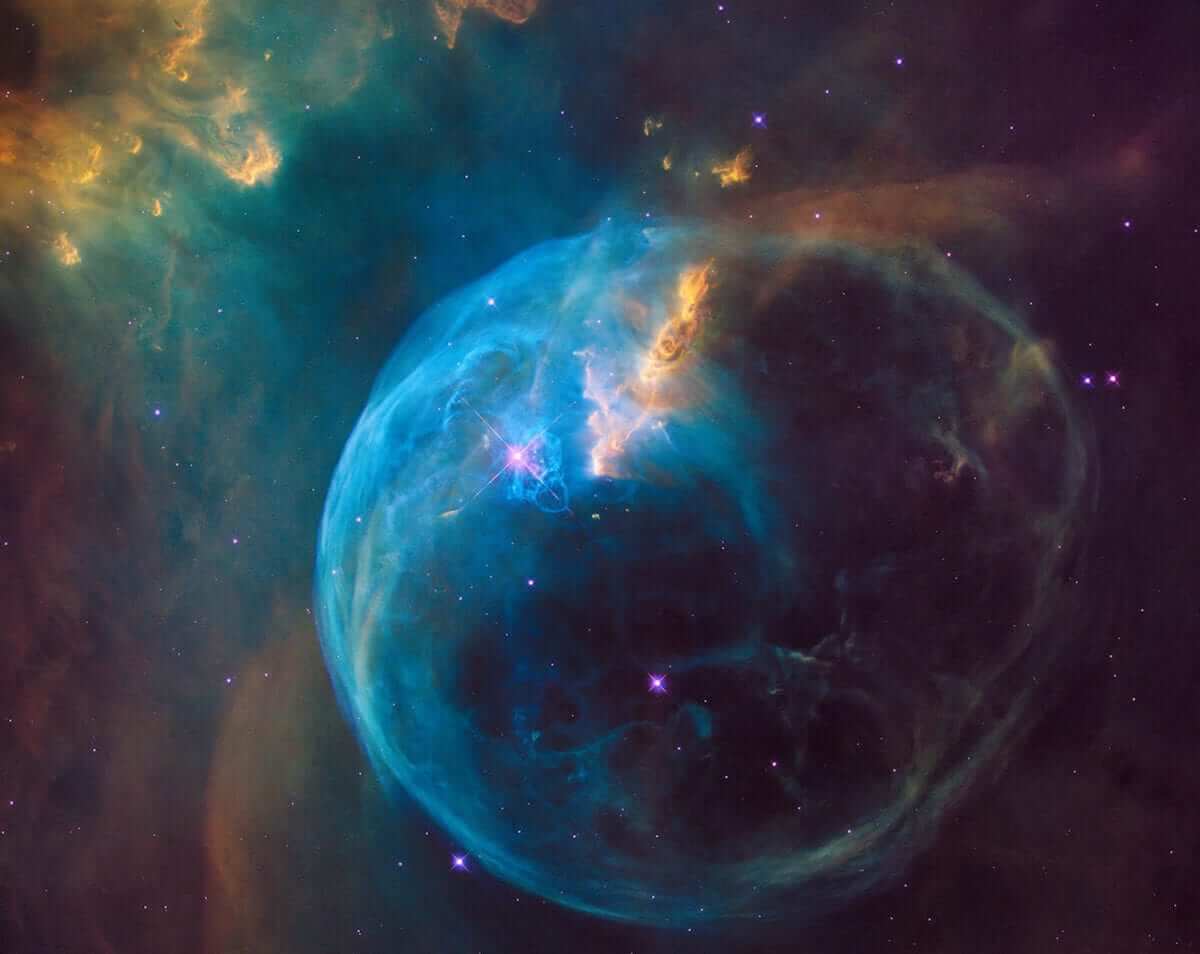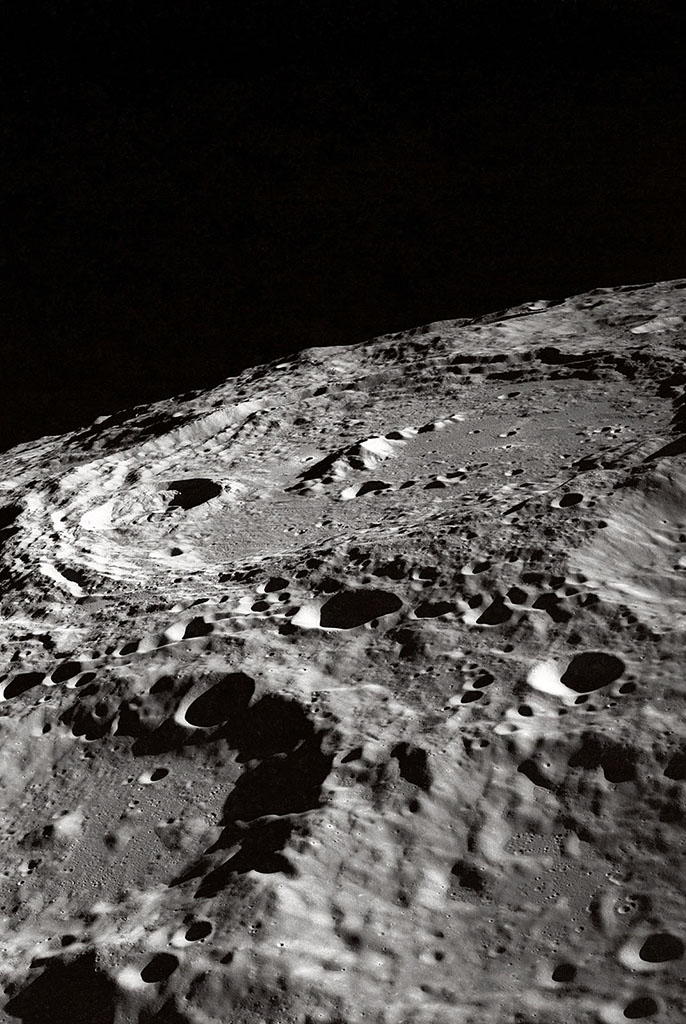Using early data from the Dark Energy Spectroscopic Instrument (DESI), a team of scientists have compiled the largest sample ever of dwarf galaxies that host an actively feeding black hole, as well as the most extensive collection of intermediate-mass black hole candidates to date.
The work has been published in The Astrophysical Journal.
This dual achievement not only expands scientists’ understanding of the black hole population in the universe, but also sets the stage for further explorations regarding the formation of the first black holes to form in the universe and their role in galaxy evolution.
DESI is a state-of-the-art instrument that can capture light from 5,000 galaxies simultaneously. DESI is mounted on the U.S. National Science Foundation (NSF) Nicholas U. Mayall 4-meter Telescope at the NSF Kitt Peak National Observatory, a Program of NSF NOIRLab. The program is now in its fourth of five years surveying the sky and is set to observe roughly 40 million galaxies and quasars by the time the project ends.
The DESI project is an international collaboration of more than 900 researchers from over 70 institutions around the world and is managed by DOE’s Lawrence Berkeley National Laboratory (Berkeley Lab).
With DESI’s early data, which includes survey validation and 20% of the first year of operations, the team, led by University of Utah postdoctoral researcher Ragadeepika Pucha, was able to obtain an unprecedented dataset that includes the spectra of 410,000 galaxies, including roughly 115,000 dwarf galaxies—small, diffuse galaxies containing thousands to several billions of stars and very little gas.
This extensive set would allow Pucha and her team to explore the complex interplay between black hole evolution and dwarf galaxy evolution.
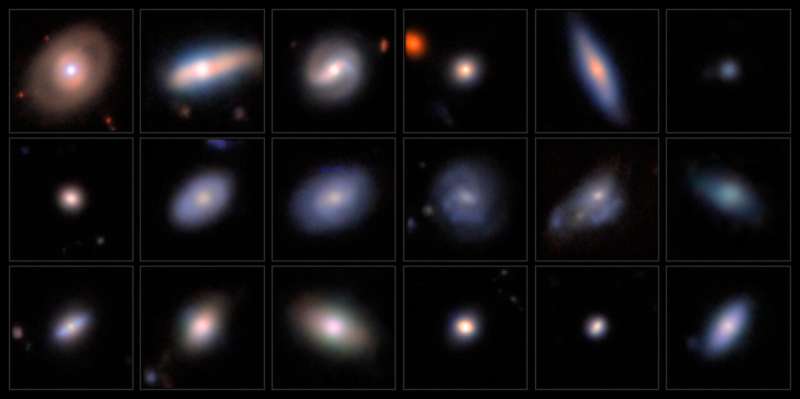
This mosaic shows a series of images featuring candidate dwarf galaxies hosting an active galactic nucleus, captured with the Subaru Telescope’s Hyper Suprime-Cam. © Legacy Surveys/D. Lang (Perimeter Institute)/NAOJ/HSC Collaboration/D. de Martin (NSF NOIRLab) & M. Zamani (NSF NOIRLab)
While astrophysicists are fairly confident that all massive galaxies, like our Milky Way, host black holes at their centers, the picture becomes unclear as you move toward the low-mass end of the spectrum.
Finding black holes is a challenge in itself, but identifying them in dwarf galaxies is even more difficult, owing to their small sizes and the limited ability of our current instruments to resolve the regions close to these objects. An actively feeding black hole, however, is easier to spot.
“When a black hole at the center of a galaxy starts feeding, it unleashes a tremendous amount of energy into its surroundings, transforming into what we call an active galactic nucleus,” says Pucha.
“This dramatic activity serves as a beacon, allowing us to identify hidden black holes in these small galaxies.”
From their search the team identified an astonishing 2,500 candidate dwarf galaxies hosting an active galactic nucleus (AGN)—the largest sample ever discovered. The significantly higher fraction of dwarf galaxies hosting an AGN (2%) relative to previous studies (about 0.5%) is an exciting result and suggests scientists have been missing a substantial number of low-mass, undiscovered black holes.
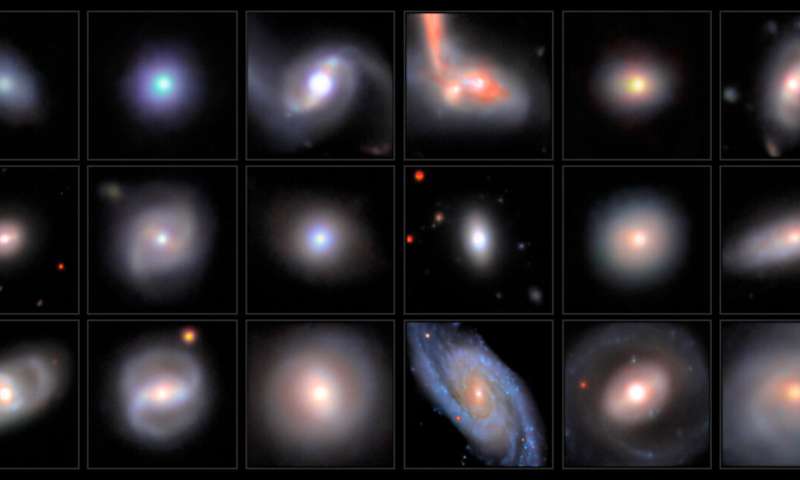
This mosaic shows a series of images featuring intermediate-mass black hole candidates, arranged in increasing order of stellar mass, captured with the Subaru Telescope’s Hyper Suprime-Cam. © Legacy Surveys/D. Lang (Perimeter Institute)/NAOJ/HSC Collaboration/D. de Martin (NSF NOIRLab) & M. Zamani (NSF NOIRLab)
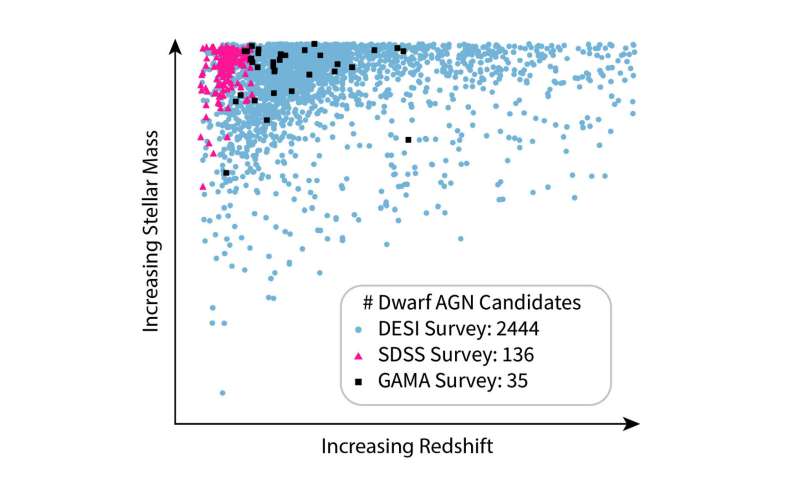
This scatter plot shows the number of candidate dwarf galaxies hosting active galactic nuclei (AGN) from previous surveys as compared with the number of new dwarf galaxy AGN candidates discovered by the Dark Energy Spectroscopic Instrument (DESI). This plot is adapted from Figure 5 in the paper titled “Tripling the Census of Dwarf AGN Candidates Using DESI Early Data,” appearing in The Astrophysical Journal. © NOIRLab/NSF/AURA/R. Pucha/J. Pollard
In a separate search through the DESI data, the team identified 300 intermediate-mass black hole candidates—the most extensive collection to date. Most black holes are either lightweight (less than 100 times the mass of our sun) or supermassive (more than one million times the mass of our sun).
Discover the latest in science, tech, and space with over 100,000 subscribers who rely on Phys.org for daily insights.
Sign up for our free newsletter and get updates on breakthroughs,
innovations, and research that matter—daily or weekly.
The black holes in between the two extremes are poorly understood, but are theorized to be the relics of the very first black holes formed in the early universe, and the seeds of the supermassive black holes that lie at the center of large galaxies today.
Yet they remain elusive, with only around 100–150 intermediate-mass black hole candidates known until now. With the large population discovered by DESI, scientists now have a powerful new dataset to use to study these cosmic enigmas.
“The technological design of DESI was important for this project, particularly its small fiber size, which allowed us to better zoom in on the center of galaxies and identify the subtle signatures of active black holes,” says Stephanie Juneau, associate astronomer at NSF NOIRLab and co-author of the paper.
“With other fiber spectrographs with larger fibers, more starlight from the galaxy’s outskirts comes in and dilutes the signals we’re searching for. This explains why we managed to find a higher fraction of active black holes in this work relative to previous efforts.”
Typically, black holes found in dwarf galaxies are expected to be within the intermediate-mass regime. But intriguingly, only 70 of the newly discovered intermediate-mass black hole candidates overlap with dwarf AGN candidates. This adds another layer of excitement to the findings and raises questions about black hole formation and evolution within galaxies.
“For example, is there any relationship between the mechanisms of black hole formation and the types of galaxies they inhabit?” Pucha said.
“Our wealth of new candidates will help us delve deeper into these mysteries, enriching our understanding of black holes and their pivotal role in galaxy evolution.”
More information:
Ragadeepika Pucha et al, Tripling the Census of Dwarf AGN Candidates Using DESI Early Data, The Astrophysical Journal (2025). DOI: 10.3847/1538-4357/adb1dd
Provided by
Association of Universities for Research in Astronomy
Citation:
DESI uncovers 300 intermediate-mass black holes plus 2,500 active black holes in dwarf galaxies (2025, February 19)
